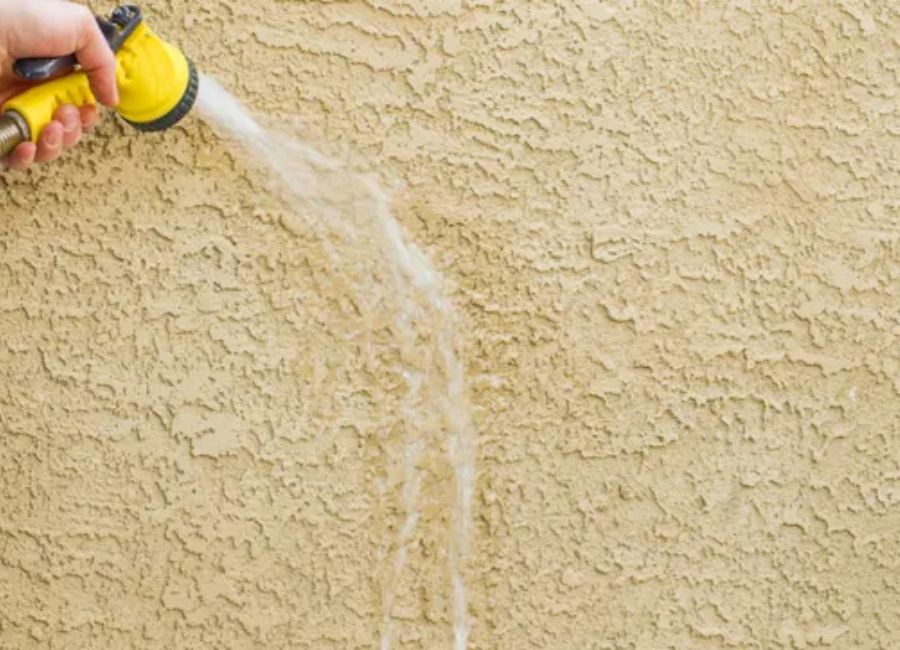
Stucco is a popular exterior finish, especially in warmer climates, thanks to its beautiful texture, energy efficiency, and timeless look. However, maintaining stucco can be a challenge—especially when it starts to gather dirt, mold, or algae. Homeowners often wonder: Can I power wash my stucco without damaging it? The answer is yes—but only if it’s done carefully. Let’s dive into what you need to know before spraying down your stucco exterior with high-pressure water 💦.
🧼 Understanding the Nature of Stucco
Stucco is a porous material made from a mix of cement, sand, and lime. Because of its texture, stucco naturally traps dust, debris, and moisture over time. That same porousness, however, also makes it vulnerable to damage from high water pressure. Blasting it with too much force can chip, crack, or even cause sections of stucco to break off entirely.
So, while power washing is technically possible on stucco, it’s not as straightforward as it is with more durable materials like concrete or vinyl siding.
💡 When Is It Okay to Power Wash Stucco?
You can power wash stucco if:
- Your stucco is in good condition (no major cracks or loose areas)
- You use a low-pressure setting
- The nozzle is kept at a safe distance
- The surface is pre-treated with a suitable cleaning solution
If your stucco is already damaged, it’s best to repair it first before introducing any water pressure.
⚠️ The Risks of High-Pressure Washing on Stucco
Using too much pressure on stucco can cause:
- Surface erosion: Wears away the top layer, weakening the material
- Cracks and flaking: Water gets into cracks and pushes the stucco outward
- Water infiltration: Moisture can seep behind the stucco and cause mold or structural damage
In the worst-case scenario, improper power washing can lead to costly repairs—or even total replacement of the stucco. That’s why knowing the right technique is essential.
🛠️ Best Practices for Power Washing Stucco Safely
Here are some tips to clean stucco without causing damage:
✅ Use a Soft Wash Method
Instead of blasting the surface, opt for a soft wash approach using:
- A pressure washer set to 1,200 PSI or less
- A 40-degree wide spray tip or larger
- A detergent-safe reservoir for pre-soaking
This allows you to rinse away dirt and algae without risking erosion.
Browse Amazon Here For Soft Washing Equipment And Accessories
✅ Pre-Treat with Stucco-Safe Cleaners
Apply a cleaning solution that’s designed for stucco, such as:
- Oxygenated bleach (not chlorine bleach)
- Biodegradable, non-acidic cleaners
- Commercial soft wash mixtures
Let it dwell for 5–10 minutes to loosen debris before rinsing.
✅ Keep the Nozzle at a Distance
Hold the pressure washer at least 2 feet away from the surface. Spray at a 45-degree angle to avoid forcing water behind the stucco. Never aim directly at seams or cracks.
✅ Avoid Power Washing During Repairs
If your stucco is newly applied or recently patched, give it at least 30 days to cure before cleaning it. Moisture intrusion during the curing process can lead to internal damage.
🧽 Alternatives to Pressure Washing
In some cases, it’s better to avoid power washing entirely and use one of these safer methods:
- Manual washing with a soft brush and hose
Ideal for small areas or light surface dirt. A little elbow grease and a gentle cleaning solution can go a long way. - Garden sprayer and cleaner combo
Spray on a stucco-safe cleaner and let it sit. Then rinse gently with a garden hose. - Hire a professional soft wash service
They use special equipment, nozzles, and eco-friendly detergents to clean delicate surfaces like stucco safely.
Browse Amazon Here For Soft Washing Equipment And Accessories
🧑🔧 When to Call a Professional
If your home has:
- Extensive staining or mold growth
- Delicate or aging stucco
- Hard-to-reach areas like second stories
…then calling in a professional is the safest route. Reputable power washing companies use soft wash systems and know how to handle stucco without causing damage. It’s a smart investment that could save you thousands in repairs down the line 💰.
🏠 Routine Stucco Maintenance Tips
To avoid aggressive cleaning down the road, follow these maintenance practices:
- 🗓️ Inspect your stucco yearly for cracks or moisture
- 🌱 Trim bushes and trees near walls to reduce organic buildup
- 🚫 Avoid placing sprinklers where they constantly hit the walls
- 🌤️ Clean once or twice a year, depending on your climate and home’s location
Keeping your stucco clean doesn’t mean blasting it—sometimes a gentle approach is the smartest one.
✅ Final Verdict: Safe, If You’re Smart About It
Power washing can be safe for stucco homes, but only with the right approach. Stick to low pressure, use proper detergents, and always err on the side of caution. If there’s ever doubt, leave it to the pros. With the right technique, your stucco can stay clean, fresh, and damage-free for years to come 🧱✨.
Browse Amazon Here For Popular Pressure Washers And Accessories



